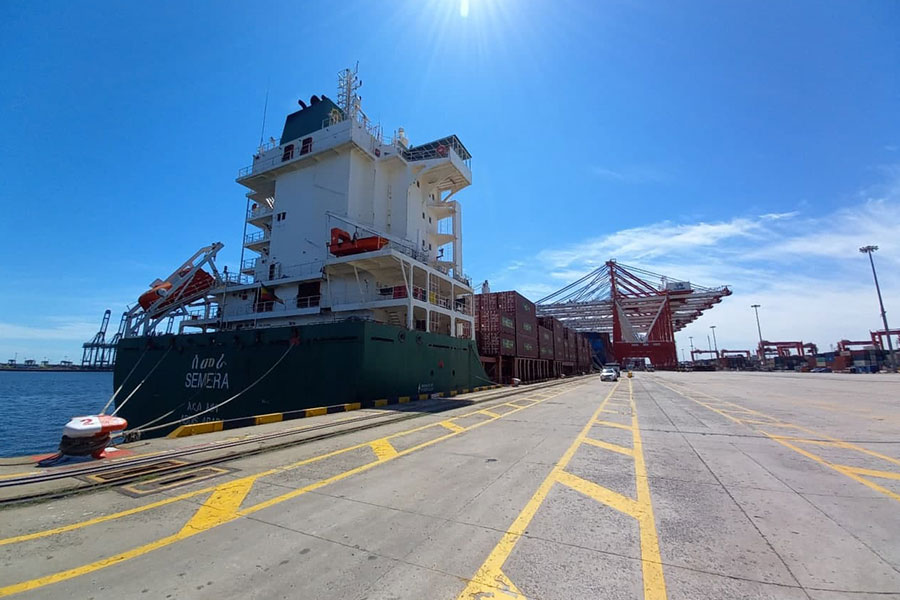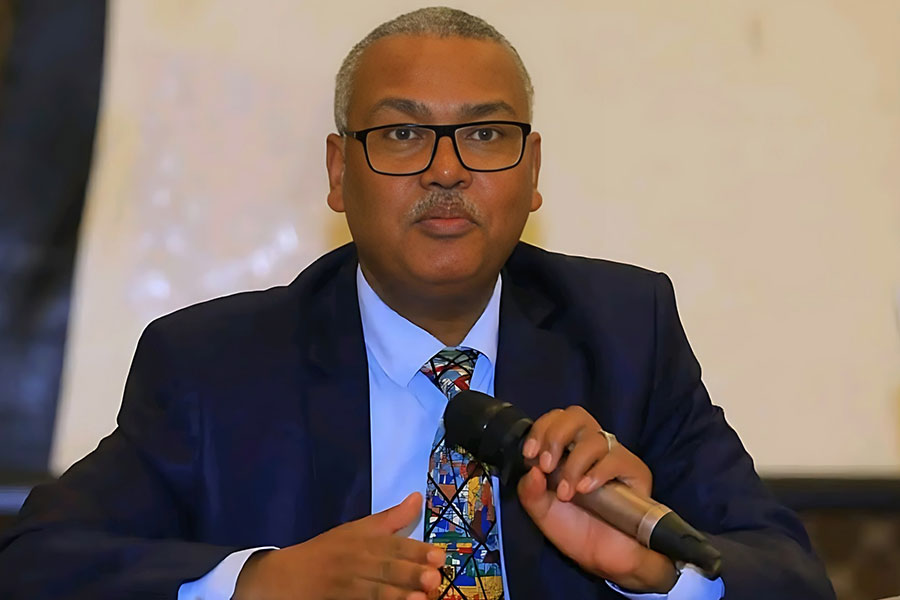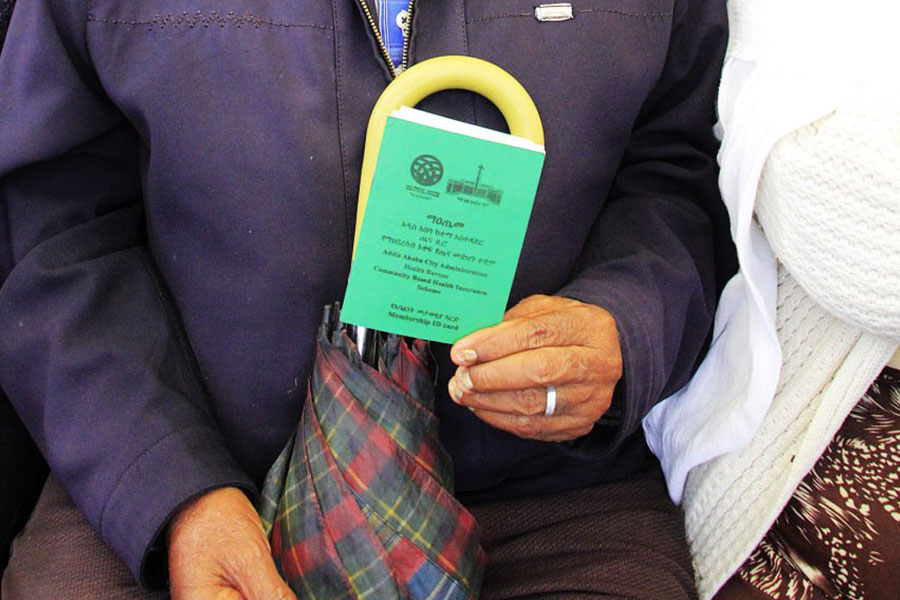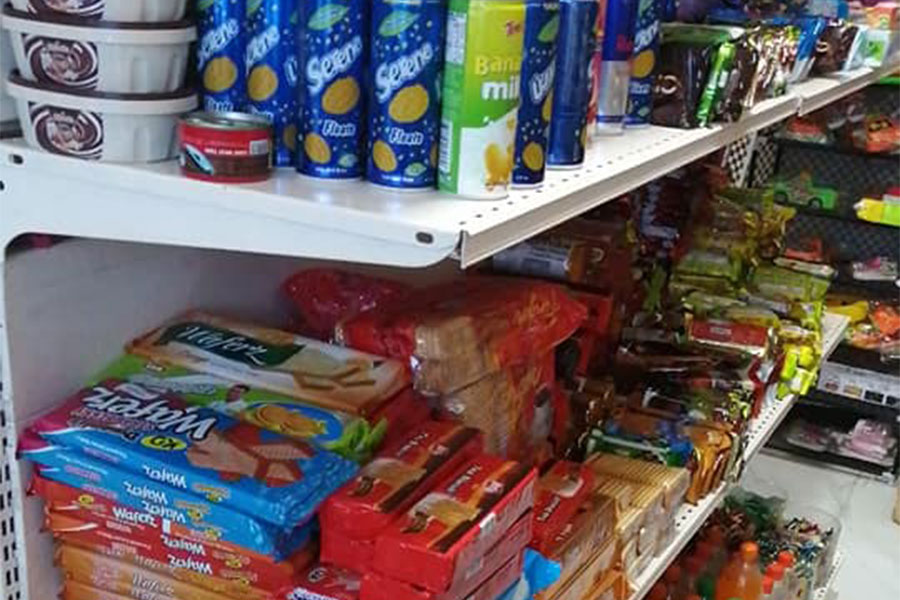
Featured | Sep 09,2019
Feb 18 , 2023.
Ethiopia’s macroeconomic landscape is known to be devoid of a monetary policy arsenal to deal with headwinds.
Once touted as one of Africa’s fastest-growing economies, the country and its leaders have faced multiple challenges from an assortment of deficits in the budget, trade and the balance of payments. The central bank appears as indifferent as a hapless bystander in the face of excruciating pain to citizens struggling not to fall on life’s downward ladder. Many have already fallen, considering the increasing population segment in the abject poverty trap, a regrettable erosion of decades of gain.
Domestically, inflation has been galloping upward since January 2019, stubborn not to drop down to the single digit. The year-on-year consumer price index for January this year was at 33.8pc, dropping by 0.1 percentage point from the previous month. However, not as much can be said about food prices, comprising over 40pc of household spending, which has seen a 0.7 percentage point increase from 32.9pc recorded in December 2022.
The foreign currency crunch could take part of the blame. For a market that imports three times more goods – in value - than it exports, the loss of Birr’s strength against a basket of other currencies is a source of imported inflation. Part of it, to be precise. The Birr has lost 75pc of its value to the Dollar this month compared to when exchanged at 21 Br in 2015.
This reflects the country’s debt burden and the growing amount of dollars it pays to service nearly 27 billion dollars in external debt stock recorded at the end of last year. Total public debt is much higher, claiming over half the nominal gross domestic product (GDP). Although both figures are much lower than the threshold for low-income countries, they remain on the high side, hence should be worrying.
Ethiopia borrowed over the decades to meet its ambitious infrastructure development plans, building highways, railways, airports, and electric dams. Although essential for improving productivity and competitiveness, several of these investments have come at a cost.
Not only the turnaround time for return on investments has passed for many of the projects, such as the case with the Grand Ethiopian Millennium Dam (GERD), initially scheduled to be completed four years ago. Ethiopia heavily relayed on non-concessional borrowing, primarily from China, with high-interest rates and more restrictive conditions than concessional loans from multilateral financial institutions such as the World Bank and the Africa Development Bank (AfDB).
Its foreign exchange reserves, covering below a month’s imports, have depleted, leaving the economy vulnerable to external shocks. Its current account deficit of two billion dollars and export earnings four times lower than its export bills of 17 billion dollars last year have made it increasingly painful to service over two billion dollars to its external creditors. At the risk of default, Ethiopia has been one of the three African countries - alongside Zambia and Chad – pleading with the G20 countries for a bailout.
The world has yet to be forthcoming with generous debt restructuring and relief offers. Spare a brief moratorium for debt servicing ended in December last year, granted to developing countries during the trying years of the COVID pandemic. Ethiopia’s appeal for its creditors remains stuck at the desks of a creditors’ committee jointly chaired by France and China. The latter is owed a quarter of Ethiopia’s external debt stock, causing its banks to suspend disbursements of several loans for projects that have already been approved. Its three policy banks involved in Ethiopia’s projects have effectively stopped releasing approved loans since 2021.
Ethiopia’s policymakers grappling with the unbearable cost of living domestically and high levels of external debt have to brace up for the rough wind ahead. The era of cheap capital chasing high rewards in emerging markets appears to have gone. The global trend of interest rate hikes and capital crunch will only exacerbate the domestic economic woes.
Policymakers’ room for navigating the coming storm appears narrow. Expecting immediate and rapid improvements on several macroeconomic fronts could only be unrealistic, if not naïve. Not much could be accomplished in boosting exports, getting rewarding deals in debt restructuring, or winning apprehensive development partners (due to wars and political instability) to open the grants pipe.
These are extraordinary times that demand exceptional imagination and bold actions from policymakers.
Perhaps aggressively exploring Ethiopia’s potential and prospects for issuing “Green Bonds” to international investors could salvage its economy already in the red zone.
Green bonds are fixed-income investment instruments that fund projects with environmental benefits. They are often issued by multinational corporations, international organizations and sovereign entities, providing a platform for global cooperation and knowledge sharing. The global market for “green bonds,” debt issued to finance environmentally friendly projects, has exploded recently. Kenya took the first leap in 2019, issuing the first green bond in Africa, followed by Nigeria.
The size of the global green bonds industry surpassed 300 billion dollars last year, up from a mere three billion dollars over a decade ago. Prospective private and institutional investors abound to put money into sustainable projects in clean and sustainable energy and transport initiatives.
Globally, China has taken the lead in the industry, accounting for nearly half of the green bonds issued in 2021. Its government’s push to transition to a low-carbon economy has led to a surge in green bond issuance from state-owned enterprises. Other countries with strong green bonds market growth include France, the Netherlands, and Sweden.
Ethiopia has immense potential for renewable energy development. It has already demonstrated itself as a source with potential for geothermal (10,000Mw), wind (five megawatts) and hydropower (45,000Mw) power generations that are clean and renewable.
Marketing its commitment to sustainable development through the strategy for a climate-resilient green economy can help policymakers build a carbon-neutral economy. Without infrastructure projects for renewable energy sources, efficiency, and conservation, the strategy will remain a document decorating the shelves of the ministers in charge of the energy portfolio. Green bonds could provide the resources for environmentally sustainable projects, attracting investors conscious of social and environmental impact.
These investors are attracted to green bonds because they offer them opportunities to diversify their portfolios and support sustainable development.
Ethiopia’s issuance of green bonds could also bring the desperately needed international capital to beef up its foreign currency reserves. International investors could work with local partners to identify and fund renewable energy projects that align with the incumbent’s policies and strategies. Actively pursuing a federal program designed to encourage domestic investors to position themselves as dependable partners to foreign capital can be a policy measure worthy of trying.
If policymakers are imaginative, driven and determined, capturing a fraction of (0.5pc) of the global green bonds market would inject over 15 billion dollars in foreign direct investment, an amount that would breathe a desperately needed sigh of relief to Ethiopia’s structural foreign exchange debacle.
PUBLISHED ON
Feb 18,2023 [ VOL
23 , NO
1190]

Agenda | Oct 23,2021

Commentaries | Apr 17,2021

Verbatim | Aug 16,2025

Fortune News | Jul 27,2025

Radar | Aug 27,2022

Photo Gallery | 177042 Views | May 06,2019

Photo Gallery | 167256 Views | Apr 26,2019

Photo Gallery | 157853 Views | Oct 06,2021

My Opinion | 136950 Views | Aug 14,2021

Dec 22 , 2024 . By TIZITA SHEWAFERAW
Charged with transforming colossal state-owned enterprises into modern and competitiv...

Aug 18 , 2024 . By AKSAH ITALO
Although predictable Yonas Zerihun's job in the ride-hailing service is not immune to...

Jul 28 , 2024 . By TIZITA SHEWAFERAW
Unhabitual, perhaps too many, Samuel Gebreyohannes, 38, used to occasionally enjoy a couple of beers at breakfast. However, he recently swit...

Jul 13 , 2024 . By AKSAH ITALO
Investors who rely on tractors, trucks, and field vehicles for commuting, transporting commodities, and f...

Oct 18 , 2025 . By NAHOM AYELE
In a sweeping reform that upends nearly a decade of uniform health insurance contribu...

A bill that could transform the nutritional state sits in a limbo, even as the countr...

Oct 18 , 2025 . By SURAFEL MULUGETA
A long-planned directive to curb carbon emissions from fossil-fuel-powered vehicles h...

Oct 18 , 2025 . By BEZAWIT HULUAGER
Transaction advisors working with companies that hold over a quarter of a billion Bir...